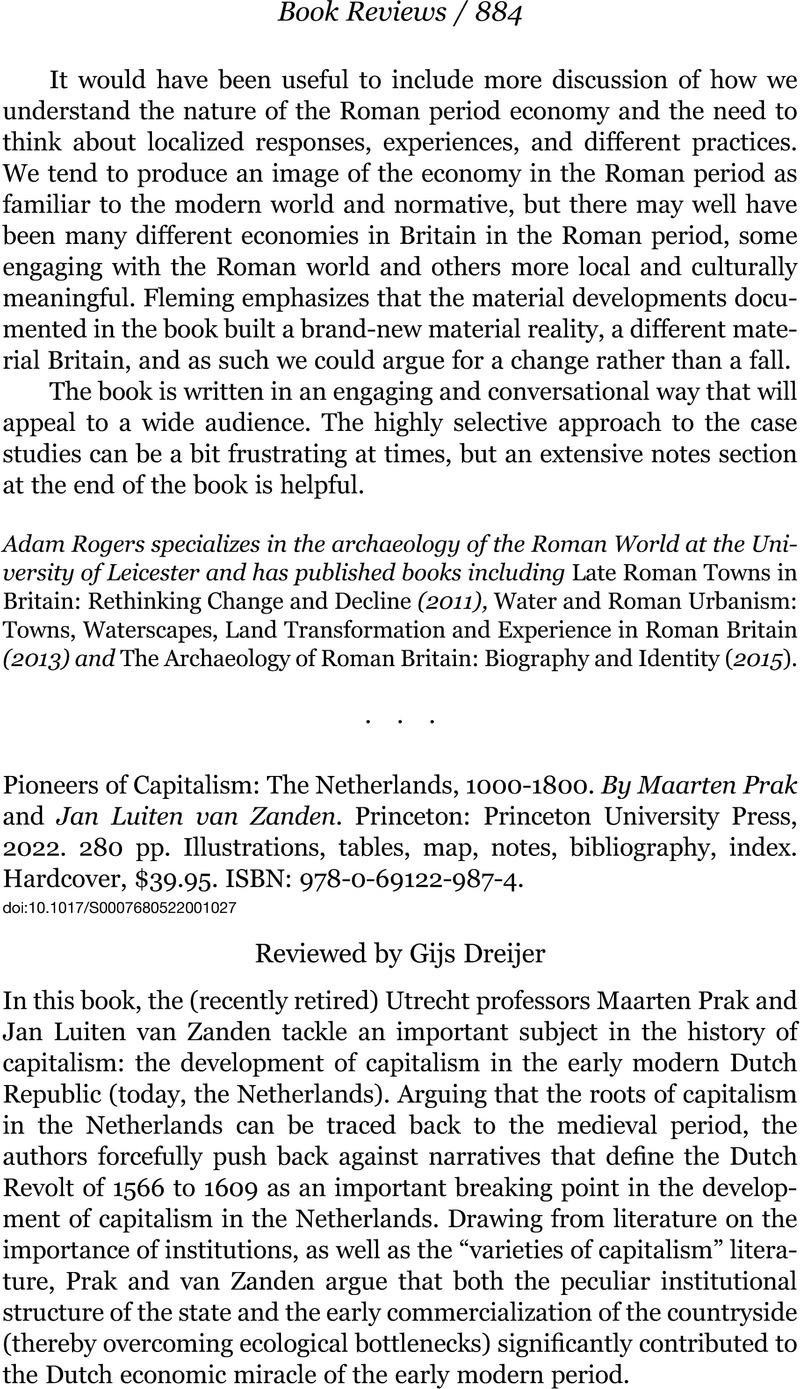No CrossRef data available.
Article contents
Pioneers of Capitalism: The Netherlands, 1000-1800. By Maarten Prak and Jan Luiten van Zanden. Princeton: Princeton University Press, 2022. 280 pp. Illustrations, tables, map, notes, bibliography, index. Hardcover, $39.95. ISBN: 978-0-69122-987-4.
Review products
Pioneers of Capitalism: The Netherlands, 1000-1800. By Maarten Prak and Jan Luiten van Zanden. Princeton: Princeton University Press, 2022. 280 pp. Illustrations, tables, map, notes, bibliography, index. Hardcover, $39.95. ISBN: 978-0-69122-987-4.
Published online by Cambridge University Press: 08 February 2023
Abstract
An abstract is not available for this content so a preview has been provided. Please use the Get access link above for information on how to access this content.

- Type
- Book Review
- Information
- Copyright
- Copyright © 2023 The President and Fellows of Harvard College


